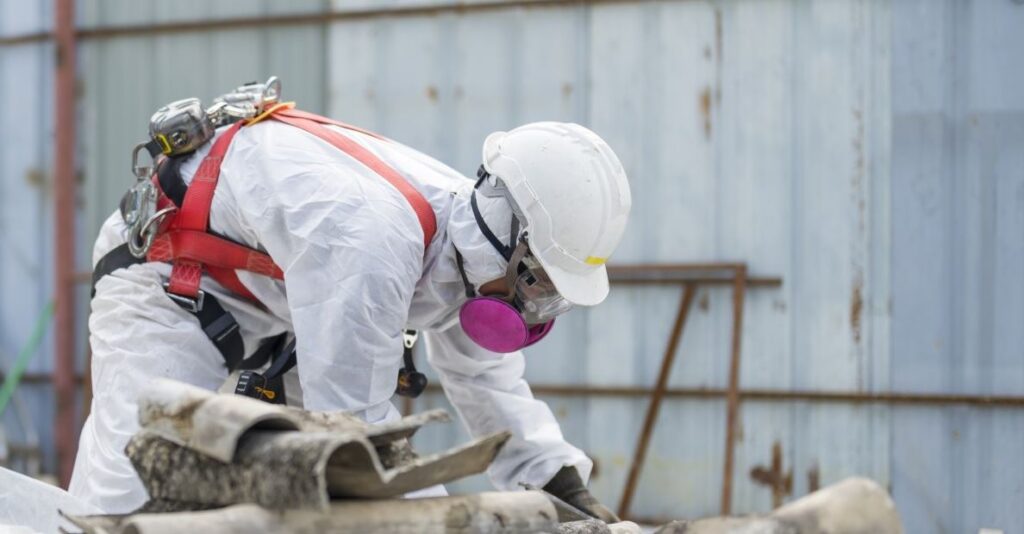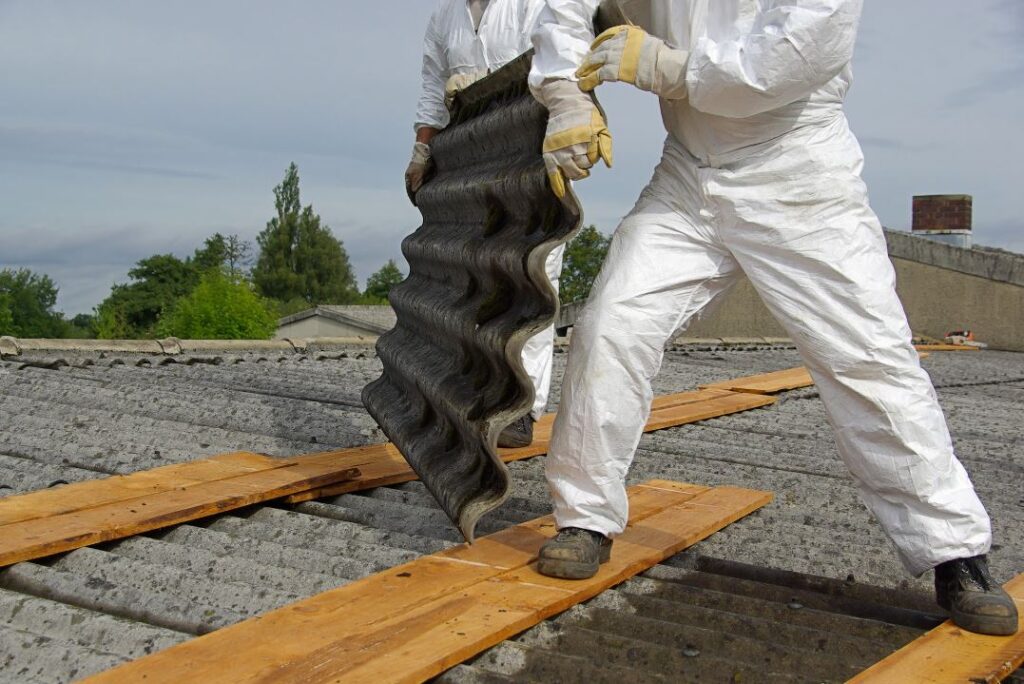Asbestos Abatement Certification: Requirements and Benefits
Welcome to our comprehensive guide on Asbestos Abatement Certification. This blog post delves into the critical aspects of asbestos abatement certification, outlining the requirements for obtaining it and exploring its numerous benefits.
Asbestos, a naturally occurring mineral, was once hailed for its versatility and used extensively in construction and various industries. However, its health hazards became apparent, leading to severe concerns. Exposure to asbestos fibres can cause significant health issues, including asbestosis, lung cancer, and mesothelioma, making it a difficult material.
Given these risks, asbestos abatement – safely removing or minimising asbestos exposure – has become essential, especially in older buildings where asbestos was commonly used. This is not a task for amateurs; handling and disposing of asbestos requires specific skills and knowledge to ensure safety and compliance with legal standards.
This is where asbestos abatement certification becomes vital. Obtaining certification signifies that an individual has the necessary training, expertise, and credentials to perform asbestos abatement safely and effectively. This blog post will explore the detailed requirements for gaining this certification, the process involved, and the state-specific variations.

Moreover, we will outline the manifold advantages of obtaining certification in asbestos abatement. These include compliance with legal standards and enhanced safety, improved career prospects, and a crucial role in protecting public health.
Through this post, you’ll gain a thorough understanding of the significance of asbestos abatement certification, guiding you towards making informed decisions, whether you’re seeking certification or requiring the services of a certified professional.
Understanding Asbestos Abatement
Asbestos abatement is a critical process involving identifying, removing, repairing, and encapsulating materials or products in a structure to eliminate the threat of asbestos exposure. This process is not just about removal; it’s about managing the risk where asbestos-containing materials (ACM) are present.
The need for professional handling of asbestos cannot be overstated. Asbestos fibres, when disturbed, become airborne and pose severe health risks upon inhalation. These risks require only trained, knowledgeable, and certified professionals to undertake asbestos abatement. Professional handling ensures safety and compliance with regulatory requirements and minimises the potential for asbestos exposure to workers and occupants. Visit www.aceasbestosremovalbrisbane.com.au to learn more.
There are different types of asbestos abatement techniques, each suited to specific situations. The most common methods include:
- Asbestos Removal: This is the complete extraction of ACM from a building or structure. It’s the most comprehensive approach but also the most invasive.
- Asbestos Encapsulation: This involves covering the ACM with a sealant that prevents the release of fibres. It’s less intrusive than removal but requires ongoing monitoring.
- Asbestos Enclosure: Involves building an airtight barrier around the ACM. Like encapsulation, it’s a temporary solution and needs regular inspection.
Requirements for Asbestos Abatement Certification
To become a certified asbestos abatement professional, several requirements must be met, starting with educational prerequisites. Generally, a high school diploma or equivalent is required, but some positions may demand more advanced education.
Training programs are the cornerstone of certification. These programs cover a wide range of content, including:
- The properties and risks of asbestos.
- Detection and assessment of ACM.
- Methods for safe asbestos removal and handling.
- Respiratory protection and other safety practices.
- Legal and regulatory aspects of asbestos abatement.
Certification exams are the next step after training. These assessments test an individual’s knowledge and understanding of all aspects of asbestos abatement, ensuring they are prepared for real-world scenarios.
State-specific requirements and variations are also a significant factor. Each state may have additional requirements or specific protocols that must be followed, making it crucial for professionals to be aware of the state regulations in which they operate.
The Certification Process
The steps to obtain certification generally involve the following:
- Completing an Approved Training Course: This is the foundational step where individuals gain the necessary knowledge and skills.
- Passing a Certification Exam: Demonstrating understanding and proficiency in asbestos abatement practices.
- Applying for Certification: This usually involves submitting proof of training, exam results, and any other required documentation. The duration and validity of certification can vary. Typically, an asbestos abatement certification is valid for a year, after which professionals must renew their credentials.
- Renewal and continuing education are crucial components of maintaining certification. Professionals must complete continuing education courses or additional training to stay up-to-date with the latest practices, regulations, and safety protocols in asbestos abatement.
Benefits of Being Certified
Certification in asbestos abatement brings numerous benefits.
Certification equips individuals with comprehensive knowledge about asbestos properties, health risks, and safe handling practices. This expertise is crucial for safely conducting abatement tasks.
Certified professionals understand and adhere to the legal requirements and safety standards, ensuring compliance with federal and state regulations. This compliance is critical for avoiding legal liabilities and ensuring the safety of workers and building occupants.
Certification can open doors to numerous job opportunities. Many organisations and government contracts require certified professionals for asbestos-related work, making certification a valuable asset for career advancement.
Certified professionals play a vital role in protecting public health and safety by properly managing asbestos hazards. This contribution is invaluable, given the severe health risks posed by asbestos.
Legal and Regulatory Framework
Understanding the legal and regulatory framework is essential:
- Federal Regulations on Asbestos Abatement: Agencies like the Environmental Protection Agency (EPA) and Occupational Safety and Health Administration (OSHA) set nationwide standards for asbestos handling. These guidelines are established to safeguard workers, the general public, and the environment from the risks associated with asbestos.
- State and Local Regulatory Differences: While federal regulations provide a baseline, states and localities often have specific regulations and requirements. These can include additional training, certification requirements, or stricter safety protocols.
- Legal Implications of Non-Compliance: Non-compliance with asbestos abatement regulations can lead to serious legal repercussions, including hefty fines, litigation, and reputational harm. Hence, it’s imperative to understand and follow these regulations.
Choosing the Right Training Program
Selecting the appropriate training program is a critical step.
Look for programs with proper accreditation, a comprehensive curriculum, and practical training components. Accreditation ensures the program meets industry standards, while a thorough curriculum and practical training provide the necessary skills and knowledge.

Online training offers flexibility and convenience, whereas in-person training provides hands-on experience and direct instructor interaction. The decision is influenced by one’s personal learning style and available time.
Reviewing recommendations from industry professionals can help choose a credible and effective training program.
The Future of Asbestos Abatement Certification
The field of asbestos abatement certification is evolving:
- Emerging Trends and Technologies: Advances in technology are continually shaping asbestos abatement methods, such as improved detection tools and safer removal techniques. Staying abreast of these changes is important for professionals in the field.
- Evolving Landscape of Certification Requirements: As knowledge about asbestos and its health implications grows, certification requirements may become more stringent or adapt to include new practices and technologies.
- The Ongoing Importance of Asbestos Safety: Despite its reduced use in modern construction, its presence in older buildings ensures that asbestos safety remains a crucial concern. Continuing education and adherence to safety protocols are vital for mitigating asbestos-related risks.
Asbestos abatement certification is a critical milestone for professionals in environmental safety and public health. This certification is not just a credential; it’s a testament to the holder’s dedication to understanding the complexities of asbestos, its health risks, and the methodologies for safe removal or containment. The significance of this certification lies in its ability to ensure that those handling asbestos are equipped with the latest knowledge, techniques, and adherence to stringent safety standards, thereby safeguarding both the individuals working with asbestos and the wider public.
Certification can be a game-changer for professionals in industries where asbestos-related work is a factor. It’s an investment in one’s career that opens up a wider array of job opportunities, particularly in sectors where certification is a legal requirement. The expertise and abilities developed during the certification journey not only boost an individual’s proficiency but also make them a crucial resource for their employers, equipped to manage intricate and sensitive tasks. In an ever-evolving industry landscape, certification clearly indicates a professional’s commitment to excellence, safety, and regulatory compliance.
The journey of a certified asbestos abatement professional does not end with receiving the certification. The field is dynamic, with continuous advancements in safety protocols, technological tools, and regulatory frameworks. Thus, ongoing compliance and commitment to continuous learning are imperative. Staying updated with the latest developments, renewing certifications regularly, and engaging in continuous education are essential practices. These ensure personal and public safety and contribute to the broader mission of mitigating the risks associated with asbestos.…
